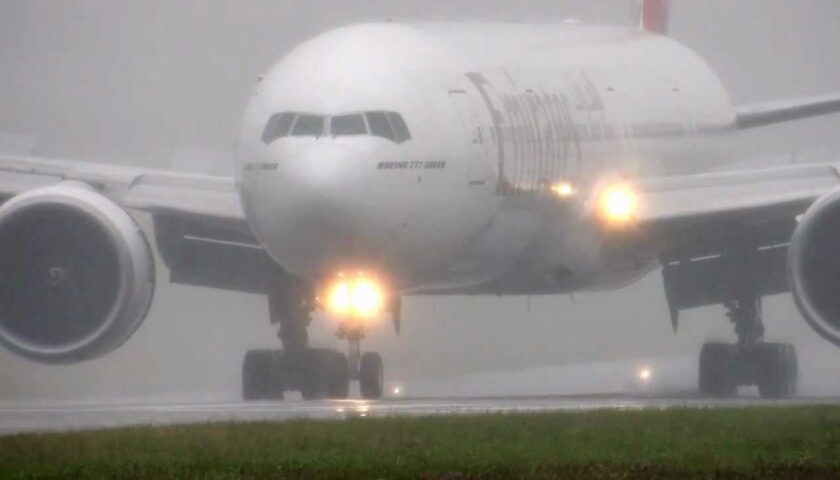On 7 August 2020, Air India Express Flight 1344, a COVID-19repatriation flight, part of the Vande Bharat Mission from Dubai, United Arab Emirates, to Kozhikode, India, overshot the runway during landing run at Calicut International Airport. The aircraft fell into a gorge killing 16 passengers, and both pilots. The remaining four cabin crew and 168 passengers survived, of whom over 100 were injured.
A very tragic accident. The accident has rattled the nation, the aviation community, and especially all the pilots in particular. Flying is not inherently dangerous but it is terribly unforgiving. The aviation industry which was fraught with adversity and at times with tragedies has emerged as one of the safest modes of transportation today. The aviation industry has made tremendous strides since the first commercial flight a little more than a century ago and pilots have played a very vital role in that.
An accident is just the tip of the iceberg, a sign of a much larger problem below the surface.
Don Brown
While I do not deny the ultimate responsibility of the captain, but when an accident happens the focus seems to be only on the pilot’s actions or omissions. If we look at the statistics and various studies undertaken in the past, over 70% of the accidents involved human factors. The most common human factors are related to poor judgment and decision making. It is pertinent to note here that all accidents involve a sequence of events. Most accidents have more than one contributing factor like environment, supervisory, and organizational. Pilots do have control over some of the factors but they, unfortunately, have no control over weather, lighting, or terrain. Given the multifactorial nature of accidents, it is more important to give these factors a good thought if we want to bring a change. Human factors and behavior are complex, and we must understand the role other factors play to modify human decision making.
Kozhikode (Calicut) accident, is not typically associated with skill-based errors, decision errors, violations, and perceptual error. Proper planning for safe flight is as important on the ground as in the air. To make sound judgment pilots require not only accurate weather-related information but they also require high-quality infrastructure. Let us all resolve to provide accurate information and the best infrastructure to avoid such kind of mishaps.
- METAR/SPECI: Let us resolve to make a fuss when METAR/SPECI is not accurate and does not convey present weather conditions. Be it visibility, cloud base, surface winds, or runway condition (wet, damp, or contaminated).
- BIRD/ANIMAL activity. Let us resolve to complain when bird or animal activity is noted around the maneuvering area. A simple NOTAM cautioning all pilots to exercise caution should not be acceptable. Why? While landing and taking off at speed close to 200 Kmph, a pilot can not take any evasive actions to avoid bird or animal which can lead to a catastrophic accident.
- Braking action. Let’s create pressure so that authorities do carry out periodic checks of braking action and the same is included in every METAR especially during monsoon season.
- Runway lighting and marking. Let us report the status of the visual navigation marking of the airfield for example unserviceable lights or vegetation growth or improper removal of paint marking on the runway. Many a time we notice that the runway centerline is not visible due to rubber deposits and we accept that. It is time to bring a change to our attitude of “Chalta Hai”.
- Let us all demand for properly grooved runway surface and their construction with porous friction course overlay,
- Urge authorities to define conditions when runway could be declared dangerous for use or simply unavailable during monsoon conditions depending on the amount of rain or a combination of rain and visibility and the expected level of runway contamination.
- Airlines/Operators may define additional qualification requirements (flying hours or route check) for flight crews operating to/from airfields located along the western coast during monsoon season.
Let us all resolve to improve the Flying Environment to make it more safe and efficient.
If you are still not convinced here is the list of incidents of the past one year. After reviewing the list, I hope you will change your mind and be an active member of the safety team.
- June 2020: Operations at the Chhatrapati Shivaji Maharaj International Airport (CSMIA) were suspended for nearly four hours after FedEx flight 5033, arriving from Bengaluru, veered off the runway amid heavy rains triggered by Cyclone Nisarga.
- Feb 2020: Over 100 passengers and crew of GoAir flight G8 802 from Ahmedabad to Bengaluru had to be evacuated at the Sardar Vallabhbhai Patel International Airport after the right engine of the aircraft caught fire during take-off after a bird-hit.
- Feb 2020: Air India aircraft’s fuselage was damaged when its pilot decided to immediately lift the plane to avoid hitting a person and a jeep that had suddenly come on the Pune airport runway during takeoff.
- Dec 2019: A GoAir plane, operating a Pune-Delhi flight, returned to Pune airport 20 minutes after take-off after a bird-hit. The aircraft was carrying 172 passengers.
- Nov 2019: A GoAir aircraft from Nagpur, veered off the runway at the Kempegowda International Airport in Bengaluru due to bad weather conditions. DGCA suspended pilots for landing the aircraft even as they lost the “visual reference” 50 feet before touchdown.
- July 2019: Air India Express flight from Dubai veered off the taxiway after landing at the Mangalore International Airport. The Boeing 737 got stuck in the soft ground near the taxiway and all passengers and crew on board were safely deboarded.
- July 2019: A SpiceJet domestic flight overshot the runway while landing at the Surat International Airport due to heavy rains and poor visibility.
- July 2019: Air India Express flight from Saudi Arabia suffers a “tail tip”, the rear part of the plane touched the surface while landing at the Kozhikode airport in Kerala.
- July 2019: SpiceJet flight overshot the runway while landing at Mumbai airport due to heavy rains and poor visibility.
- July 2019: A SpiceJet flight veered off from runway after landing at Kolkata, damaging four runway lights.
Accidents hurt, safety does not.
Be Safe. Be Safety Conscious.



